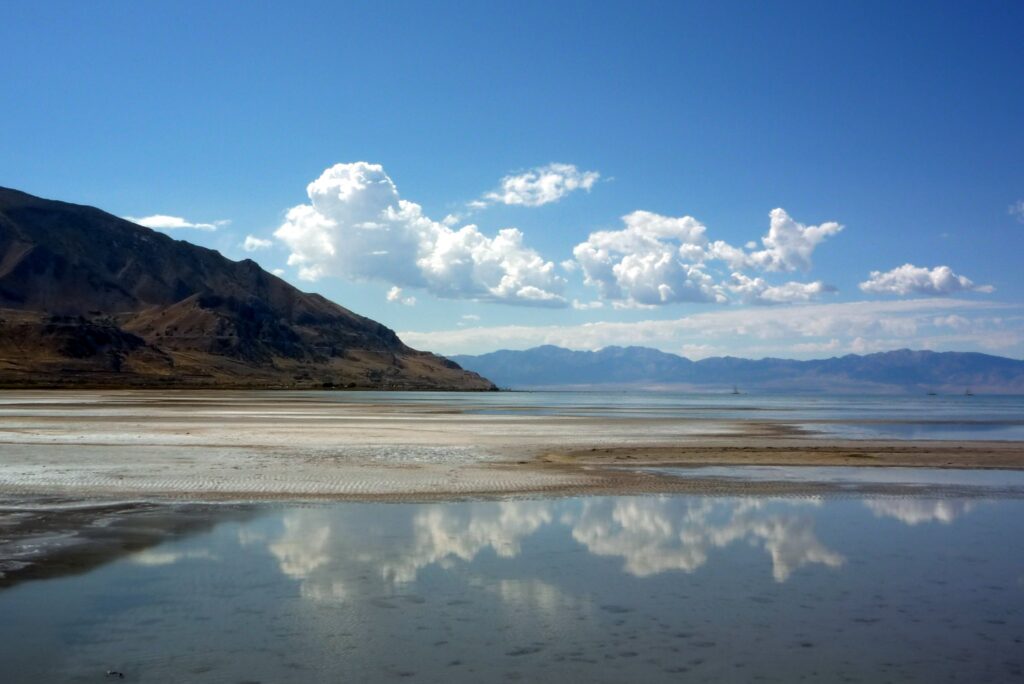
Utah’s Great Salt Lake has been plagued by excessive water use and extensive drought conditions. As of January, the lake dropped to record-low water levels, losing 73% of its water and exposing 60% of its lakebed. According to scientists, the lake could disappear entirely within five years.
Great Salt Lake is what is known as a “terminal lake,” which means that it is fed only by rain, snow, and runoff and has no rivers that take water to the ocean. As a result, salt and minerals build up over time. With so much salt in the water, only brine flies and shrimp can survive in it. The unique ecosystem supports 10 million migratory birds. As the lake continues to dry up, the water is becoming too salty for even algae and microbes to survive. With shallow mud replacing previous shallow water, the nests of the 80,000 white pelicans that annually come to the lake are endangered by predators that can simply walk over to the eggs.
The historic low water levels have exposed 800 square miles of lakebed. This lakebed holds centuries of natural and manmade toxins like mercury, arsenic, and selenium. The exposed mud ultimately turns to dust that is carried off into the air. This is contributing to what is already some of the worst winter air pollution in the nation. Scientists warn that the unfolding ecological disaster may become a human health disaster.
State officials and university researchers have formed a “Great Salt Lake Strike Team” looking for ways to get more water to the lake. There are a number of so-called moonshot proposals to save the lake. It remains to be seen what will be done, but the clock is ticking.
**********
Web Links
Great Salt Lake will disappear in 5 years without massive ‘emergency rescue,’ scientists say
Scientists fear a Great Toxic Dustbowl could soon emerge from the Great Salt Lake
Photo, posted September 19, 2009, courtesy of John Morgan via Flickr.
Earth Wise is a production of WAMC Northeast Public Radio
Leave a Reply